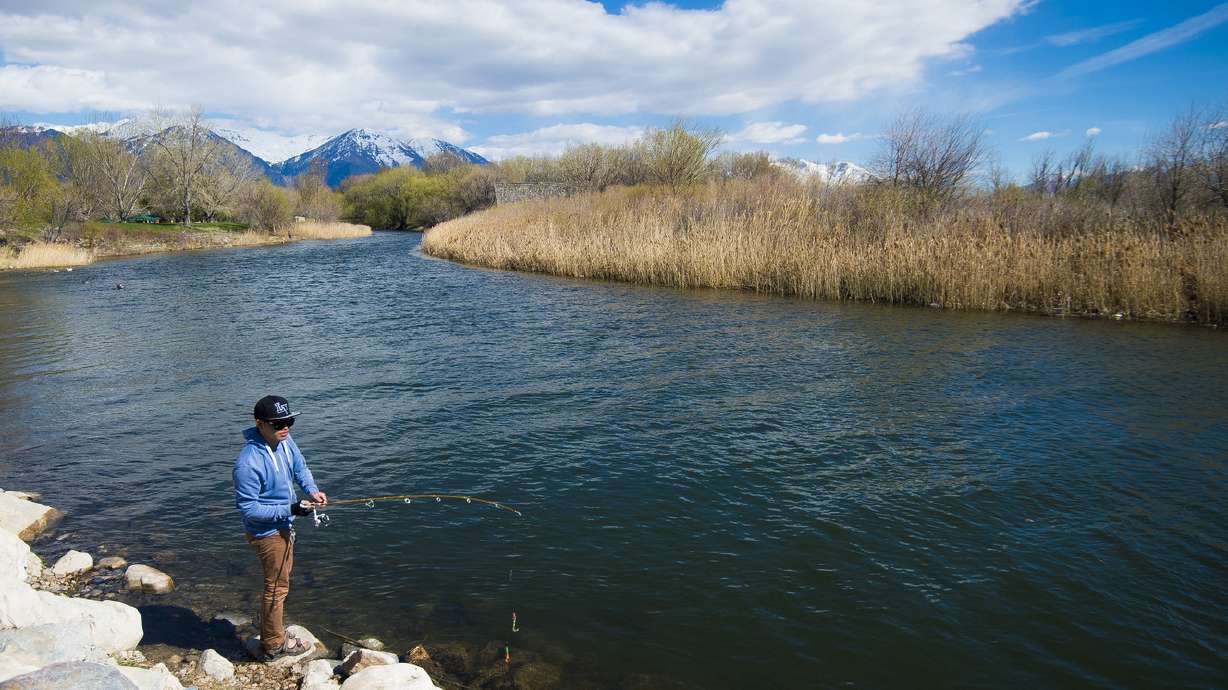Estimated read time: 2-3 minutes
This archived news story is available only for your personal, non-commercial use. Information in the story may be outdated or superseded by additional information. Reading or replaying the story in its archived form does not constitute a republication of the story.
SALT LAKE CITY — The challenges of ridding Utah Lake of future algae blooms could cost "tens of millions of dollars," the Legislature's Water Development Commission was told during a meeting Tuesday.
Lawmakers listened to concerns from environmental quality and wildlife resource authorities about eliminating invasive species from Utah Lake, fostering native species growth and mitigating nitrogen- and phosphorous-based nutrients seen as the primary cause for the harmful algal blooms that spread across the lake this summer and last.
Erica Gaddis, director of the Division of Water Quality, said the algal blooms seen on Utah Lake are a result of nitrogen- and phosphorous-based nutrient runoff. But Gaddis said systems to capture storm-water runoff could cost "tens of millions of dollars."
She noted that Utah Lake has nearly a half-million visitors a year when there are no algal bloom issues and said a statewide study indicated that Utahns would be willing to spend large sums of money in order to improve the water quality.
Gaddis said over the next three to four years, a steering committee would continue to perform a cost/benefit analysis before making a recommendation on how to improve the lake's water quality.
Unhealthy algae isn't the only problem plaguing the freshwater lake in Utah County.
Rory Reynolds, assistant director of the Division of Wildlife Resources, discussed efforts to remove the carp that are not native to the lake.
While achieving complete removal of an invasive fish species such as carp is an "admirable goal," it was "not very a practical one," he said.
The current best solution is to pursue population-management goals to reduce invasive species, he said. Over the past decade, the state has sponsored efforts for fishermen to remove tons of carp from the lake.
Reynolds also advised the commission, in the long term, to consider more lasting solutions such as introducing a genetically modified version of the carp that will only reproduce males, eventually causing the carp population to die off. Reynolds said some states, like Kansas, are researching the possibility of such a program, and the idea would probably be a viable option within the next 10 years.
The Water Development Commission also discussed water conservation strategies, growing population projections for southern Utah and expectations for a Lake Powell pipeline.
Ron Thompson, general manager for the Washington County Water Conservancy District, said Washington County currently uses about 85 percent of its potable water. Conservation can only go so far toward providing water for Washington County, he said, adding that "you can't conserve yourself down to zero."
Thompson said it would be important to continue planning for water development projects like the Lake Powell pipeline, which may not immediately be needed but take years to develop.
"We're growing at 1,500 homes, plus the businesses, every year right now," Thompson said. By 2025, places in southern Utah will start overdrawing from aquifers in order to support the water needs of the growing population. Email: rmorgan@deseretnews.com









